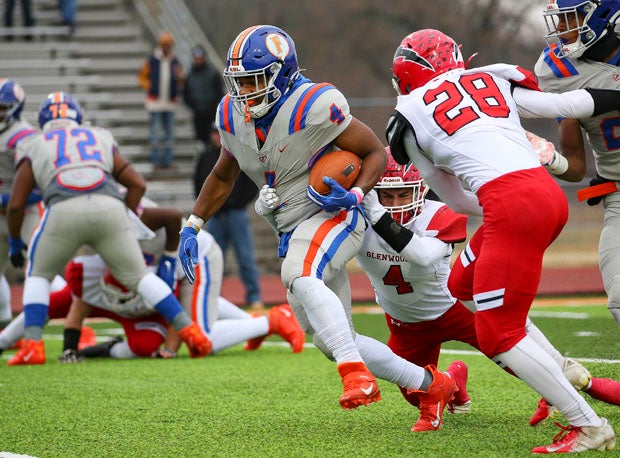After 34 states powered through the pandemic to complete 11-man high school football seasons during the fall, 12 more hope to embark on campaigns in the winter and spring. Washington was the first to hit the field on Feb. 13.
Two big developments out West took back the week of Feb. 15, including California Gov. Gavin Newsom announcing an updated guidance on youth and high school sports, which
would allow outdoor high-contact sports such as football back in the fold starting Feb. 26.
With minimum of 10 practices, games can't begin until March 5 with an end date at late as May 1 — though most sections are restricting earlier end dates — most teams are shooting for 5-7 game schedules. There are many requirements for this to happen, but most vital is county COVID-19 case rates remain below 14/100,000. As of Feb. 19, 27 of the state's 58 counties were below, but overall rates are dropping rapidly.
On Feb. 17, Nevada Gov. Steve Sisolak
announced that sports, including football, can resume after nearly a
one-year pause. The positive news was curbed when revealed that Clark County,
which includes most of the Las Vegas area, will not allow competition
until in-person learning is in place, which it currently is not. More
than 75 percent of the state's 3.08 million residents call that county
home.
For the rest of the state, football is scheduled begin as early as March 5 with at least a five-game season.
Massachusetts, North Carolina and Virginia have seasons scheduled later this month, while six others — California, Illinois, Maryland, Nevada, Oregon and New Mexico plus Washington D.C. — plan to start games in March.
Two other states — New York and Rhode Island — are still either working on a start date or considering taking 2020-21 off from football. Other states that have already canceled football: Connecticut, Hawaii and Maine.
Here is a state-by-state update from states that didn't play football in the fall.

Teams like Glenwood and East St. Louis, which met in the 2019 Illinois 6A semifinals, can't wait to get started next month.
File photo by Chris Jones
March 5-May 1
Many have credited a 900-member Golden State High School Football Coaches Community and the 60,000-member Facebook organization Let Them Play CA, a pair of youth sports advocacy groups, with pushing the state officials to change the guidance. "We were a pain in their neck,"
Serra (San Mateo) football coach Patrick Walsh said. "But we pushed hard and organized all in the name of kids."
Connecticut Season canceled Jan. 14.
District of ColumbiaDates: March 1-May 1
Hawaii
Season canceled Jan. 6.
IllinoisDates: March 3-April 24
MaineSeason canceled Feb. 3.
MarylandDates: Feb. 13-April 17
MassachusettsDates: Feb. 22-April 25
NevadaDates: March 5-April 10
Sisolak on the decision to play: "A lot of the kids, and I fully understand, they want to get back on the
field, they want to have practices, they want to have their games. Some students are hoping for scholarships to move on to
college. We're going in the right direction, and we decided it was time.
Now, it's up to local districts. Clark County, I don't know if they'll
participate. That will be up to them. But there's been a lot of demand
in Washoe and the rural counties to allow us to move forward."
New Mexico Dates: Feb. 22-April 3
New York
Dates: March-TBD
The NYSPHSAA
sent out revised plan for winter/fall sports Feb. 5.
North CarolinaDates: Feb. 8-April 9
OregonDates: TBA
Rhode IslandDates: TBD
On Jan. 20, the Rhode Island Interscholastic League announced that winter sports — including basketball, indoor track, swimming, gymnastics and hockey — will resume
but the status of football and other high risk sports remains up for discussion.
Feb. 4-May 1
Many teams, including all from the city of Richmond, have opted out of the season. A
six-game season in seven weeks is followed by the playoffs, which are scheduled to start April 7.
Washington Dates: Feb. 1-March 20